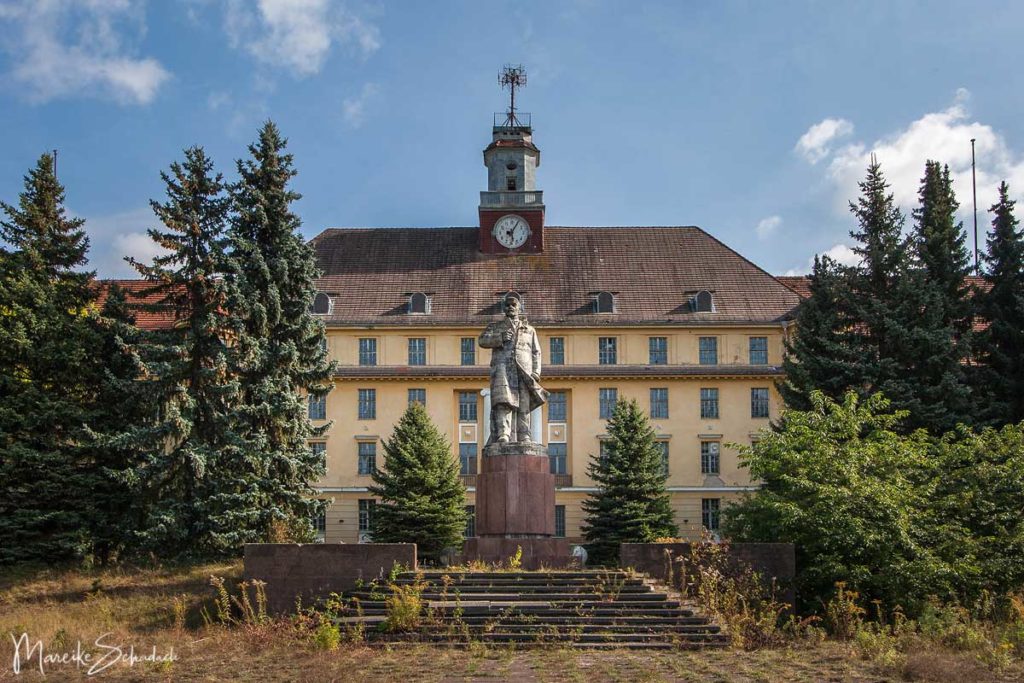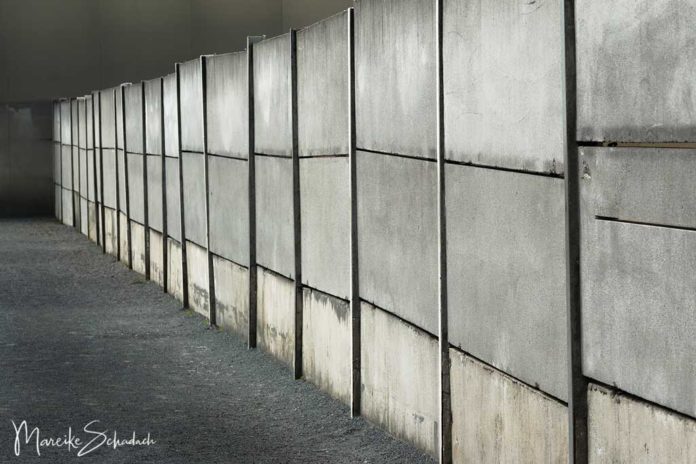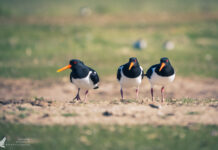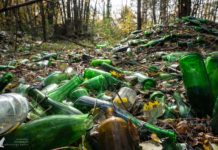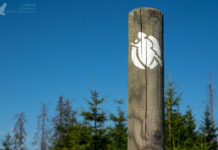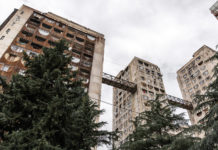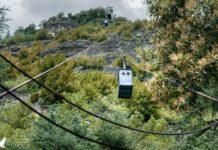Berlin. What makes the Berlin Wall Trail so interesting as a long-distance hiking trail? Besides nature, there are the traces of history, the memorials and remains of the border installations that you can discover on your hike. Especially the former watchtowers and longer sections of the Berlin Wall, such as the famous East Side Gallery. Every single relict of the border installations contributes to a deeper understanding of the history about the division of Germany. Here you can read about where you can find former watchtowers and interesting remains of the Berlin Wall along the Wall Trail.
Unassigned, unpaid advertising. The article contains affiliate links.

Watchtowers and remains of the Berlin Wall
#1 Section of the Inner Wall in the Wall Park - Hall of Fame für Graffiti Sprayer
#2 Bernauer-Straße - Border Installations in original Structure
#3 Former Command Post Kieler Eck - Memorial Gunter Litfin
#4 Wall Segments at Potsdamer Platz - the Chewing Gum Wall
#5 Watchtower in the Erna-Berger-Straße
#6 Preserved Section of the Outer Wall in Niederkirchner Straße - the Tracks of the Wall Woodpeckers
#7 East Side Gallery - the longest and most famous Piece of the Berlin Wall
#8 Command Post and Art Location at Schlesischer Busch
#9 Metal Fence and Remnants of the Wall in Kladow
#10 Command Post Nieder Neuendorf with Border Museum
#11 Nature Conservation in the Bergfelde Command Post
#12 "Stalin Lawn" in the Eichwerder Moor Meadows
In the map below, the former watchtowers and the most interesting remains of the Berlin Wall are marked with a camera symbol. The stars stand for further highlights that you can discover along the Berlin Wall Trail. You can read more in my article Berlin Wall Trail - 15 Highlights of the Walk around West Berlin (coming soon).
The Border Installation between West and East Berlin
The 160-kilometer-long border between West and East Berlin consisted not only of the famous Berlin Wall and associated watchtowers. Rather, it was a complex barrier system that was constantly being expanded and optimized. The 50 to 150 meter wide border strip - also known as the death strip - was bordered to the east by an inner wall or metal fence and to the west by a 3.6 meter high concrete wall. In between there was the signal fence with sneak-by protection. When touched, the alarm was triggered immediately. Behind it, thorn mats, the so-called Stalin lawn, were laid out. This was followed by a raked sand area and vehicle barriers. The entire border strip was completely illuminated and secured with additional alarm systems and monitored by armed border guards.
The first watchtowers were already built in 1952, about 9 years before the actual construction of the Berlin Wall. Initially, they were wooden or steel towers and brick towers. From the 1970s onwards, the watchtowers were then built from prefabricated concrete elements. Along the border there were a total of 280 watchtowers and 32 command posts. The distance between the watchtowers within the city was just 250 metres. Each watchtower was connected to its command post via the telephone line. This was also a tower, only slightly larger. Each command post controlled 18 other watchtowers.
Watchtowers and remains of the Berlin Wall
#1 Section of the Inner Wall in the Wall Park - Hall of Fame für Graffiti Sprayer
In the Mauerpark, about 300 meters of the former inner wall are still preserved. It borders the Friedrich-Jahn Stadium and was built especially high and massive because of the many visitors in the stadium. Since the fall of the Wall in 1989, this section of the wall has been used by graffiti artists, and since the summer of 2019 it has also been completely legal.

#2 Bernauer-Straße - Border Installations in original Structure
Opposite the Berlin Wall Documentation Center on Bernauer Strasse, an original section of the border installation has been preserved in its original structure. This includes the border wall, death strip, guards' path, whip lamps, and inner wall. From the Documentation Center's observation tower you have a good view of the complex. Before the Wall was built, this area belonged to the cemetery of the Sophienkirche parish. For the construction of the Wall in 1961 the dead had to be reburied and the gravesites dissolved.
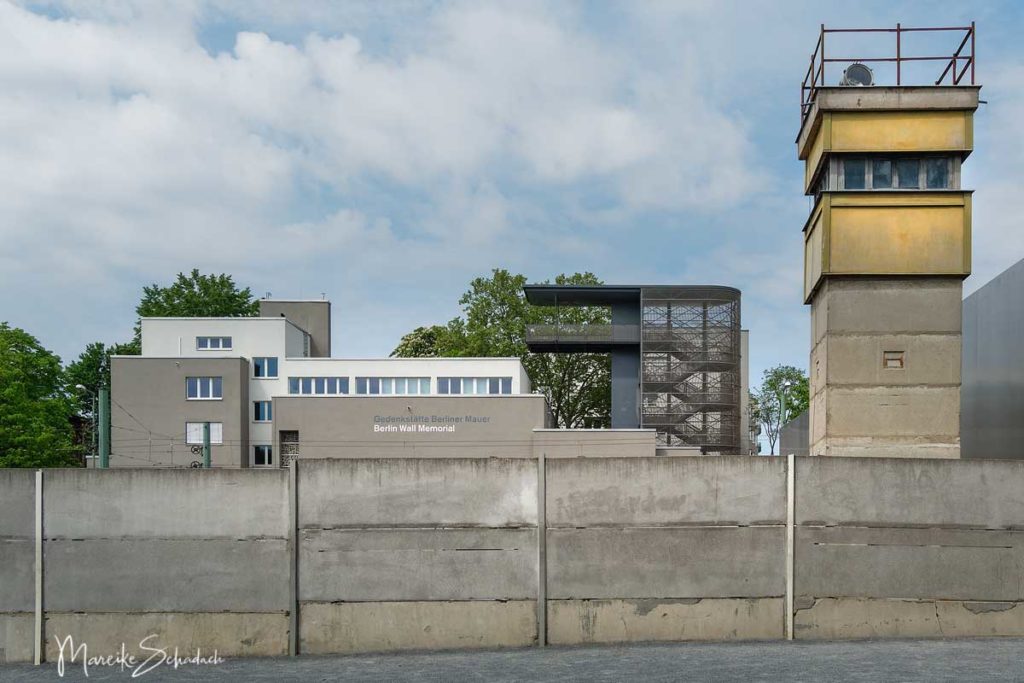
#3 Former Command Post Kieler Eck - Memorial Gunter Litfin
The watchtower in Kieler Straße houses the Günter Litfin memorial. Günter Litfin was shot on August 24, 1961 while trying to escape. He was the first victim of targeted shots on the border between East and West Berlin, eleven days after the Wall was built. The watchtower used to be a command post for GDR border troops. Today, the tower is standing between residential buildings from the 1990s. A little further south, at the Invalidenfriedhof (cemetery for invalids), there is also a piece of the inner wall.

#4 Wall Segments at Potsdamer Platz - the Chewing Gum Wall
The Potsdamer Platz was formerly a border area. The death strip here was several hundred meters wide. Where shopping centres attract crowds today, there was nothing after the Wall fell. Afterwards, the largest construction site in Germany was built. The bright red info box documented the past and the planned future of Potsdamer Platz. From the roof there was also a great view over the wide construction site. And what would Potsdamer Platz be without a piece of the Wall? That is why some original segments of the wall were placed on Potsdamer Platz and Leipziger Platz. However, they are no longer in their original location. But they mark the location of the inner and outer walls. What is remarkable about the wall segments standing here is that they are covered with hundreds, if not thousands, of chewing gums. I don't know - I think normal graffiti would look nicer there.
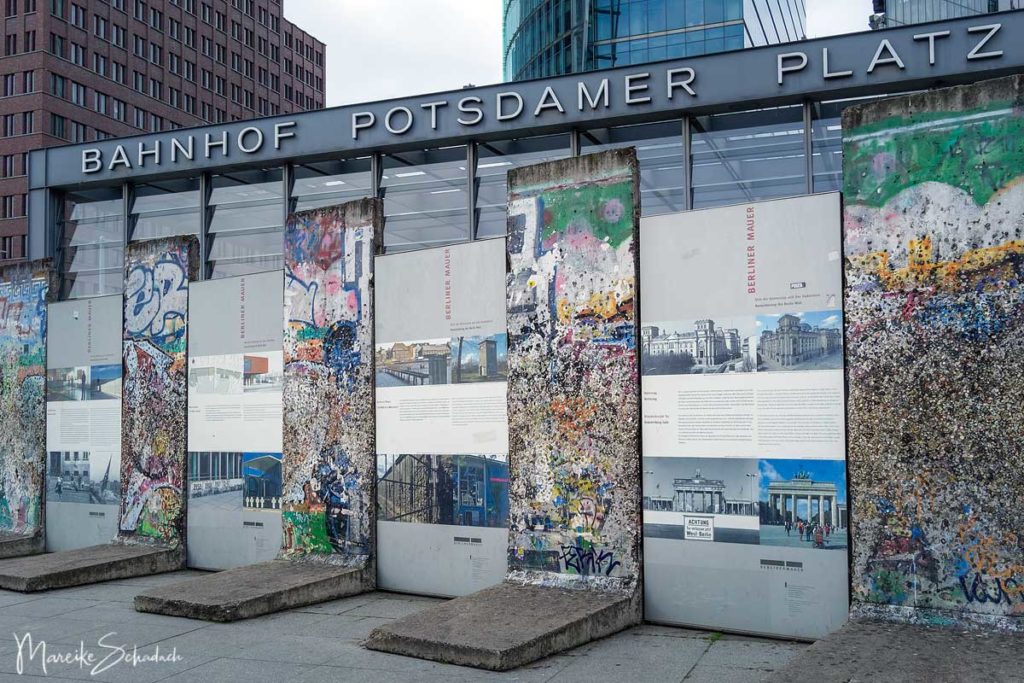
#5 Watchtower in the Erna-Berger-Straße
Also in Erna-Berger-Straße a watchtower of type BT 11 is still preserved. However, it is no longer in its original place. Because of the new buildings it had to be moved a few meters. The watchtower was extensively renovated between 2011 and 2014. Since then it has become a highlight for visitors to Berlin.
The observation tower was built around 1971. It is the last remaining tower of this early type, the BT 11, which was the first to be built in concrete after the wooden towers. There were more than 200 of this type at that time. The tower was permanently occupied by two border soldiers.
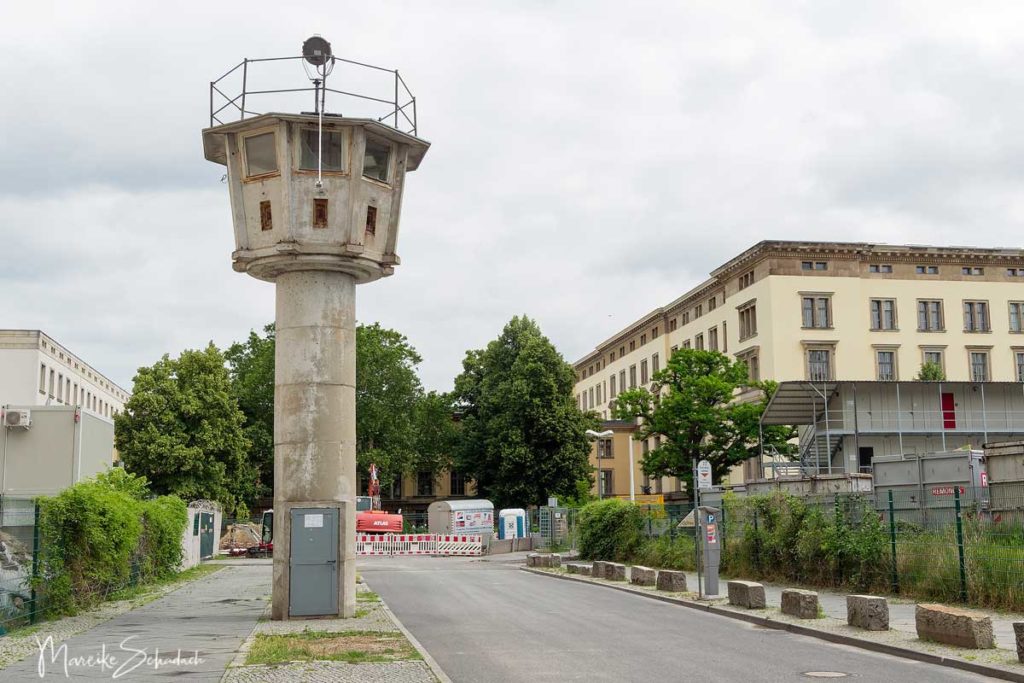
#6 Preserved Section of the Outer Wall in Niederkirchner Straße - the Tracks of the Wall Woodpeckers
In Niederkirchner Straße, a 200-meter-long piece of the original wall stands on the site of the Topography of Terror. The wall was exploited in 1989/90 by the so-called "wall woodpeckers". The souvenir hunters used tools to break pieces out of the Wall in order to sell them to tourists. In many places the wall has been removed except for the steel reinforcements. Due to the damaged condition the wall is now fenced in. It was consciously preserved in this condition as a testimony of history.
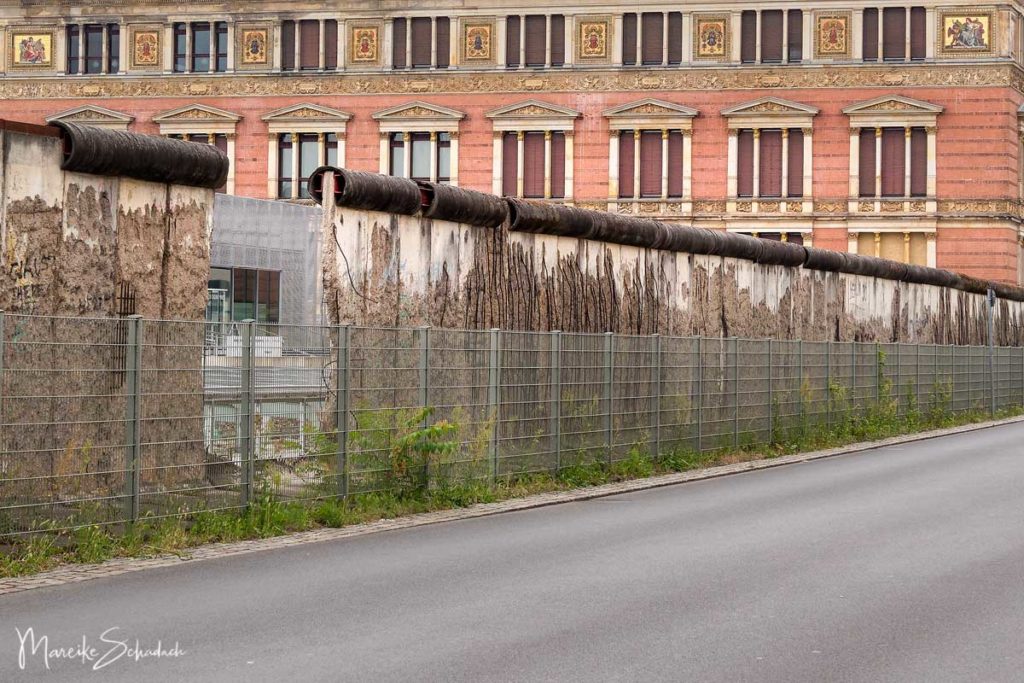
#7 East Side Gallery - the longest and most famous Piece of the Berlin Wall
The East Side Gallery is the longest section of the wall still preserved, at about 1.3 kilometres. And certainly also the most famous. For the Wall between Ostbahnhof and Oberbaumbrücke is not only a testimony to history, but also the longest open air gallery in the world. But the Wall on the Spree has two sides: a colourful one as an expression of joy and hope and a white one as a shadow catcher. Since the 1980s, the side of the Wall facing the Spree River had been painted white so that border guards could see refugees better.

The East Side Gallery was built after the opening of the Berlin Wall between spring and autumn 1990. 118 artists from 21 countries painted the then grey concrete wall with 106 works of art. And thus saved the Wall from demolition. In their paintings, the artists expressed the political changes of 1989/90 and their joy over the fall of the Wall. In November 1991, the wall and its paintings were finally listed as a historical monument. However, environmental influences and overpainting caused the paintings to suffer. After minor restoration measures, a complete restoration finally took place in 2009. The works of art were removed and the respective artists were asked to repaint their paintings with more resistant colours.
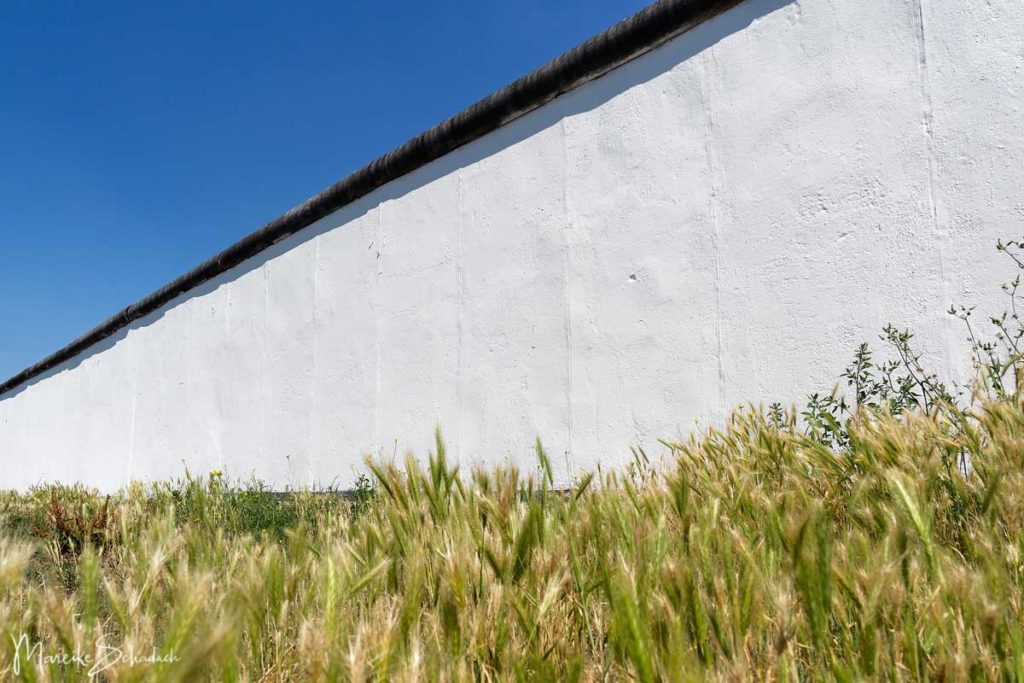
#8 Command Post and Art Location at Schlesischer Busch
The watchtower at Schlesischer Busch was occupied on 1 July 1990 by the artist and songwriter Karl Winkler and declared a "Museum of Forbidden Art". Thus the tower and its interior was preserved. Today, the Flutgraben e.V. association runs an exhibition on the history of the site as well as changing art exhibitions here.
The tower was formerly a command post and controlled 18 other watchtowers as well as the electronic security systems of this section of the wall. The square tower is 10 metres high, has four floors and a walk-on roof. The base floor was sunk into the ground. It housed the technical installations, including the telephone system to the surrounding watchtowers. On the ground floor there was a detention cell and a toilet, above it was the lounge. The second floor was the actual observation post. Here in the command post, the alarm was triggered by the signal fences erected since 1967.
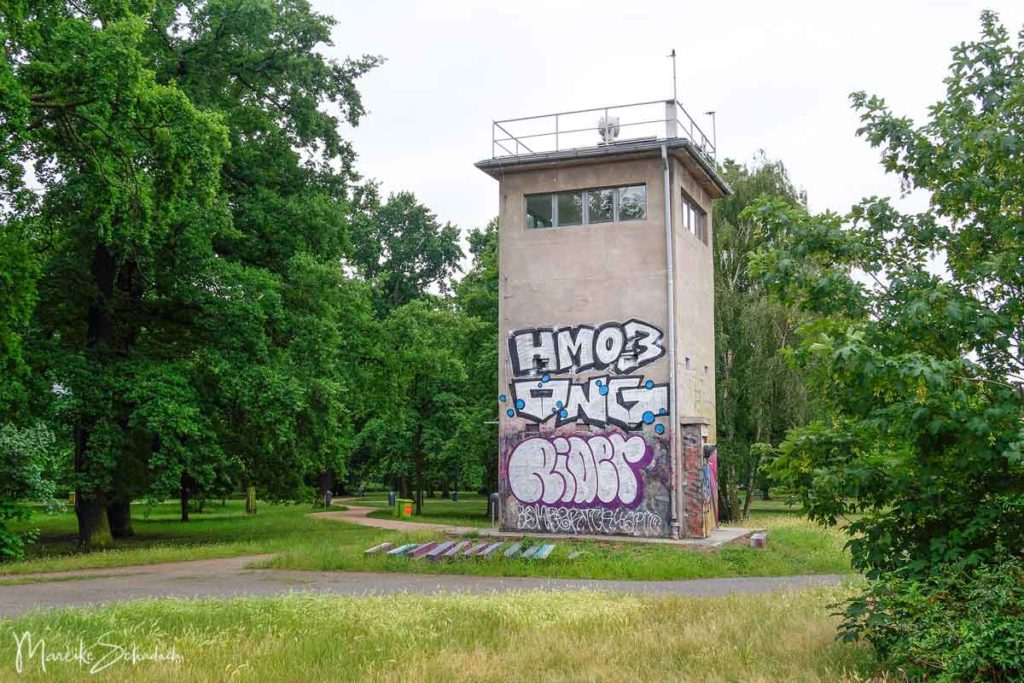
#9 Metal Fence and Remnants of the Wall in Kladow
Next to a short piece of the former wall with a pipe top against climbing over, you can see a longer fence section. The three meter high metal fence is from the second half of the 1980s. Metal fences were often placed in the outskirts instead of the inner wall.
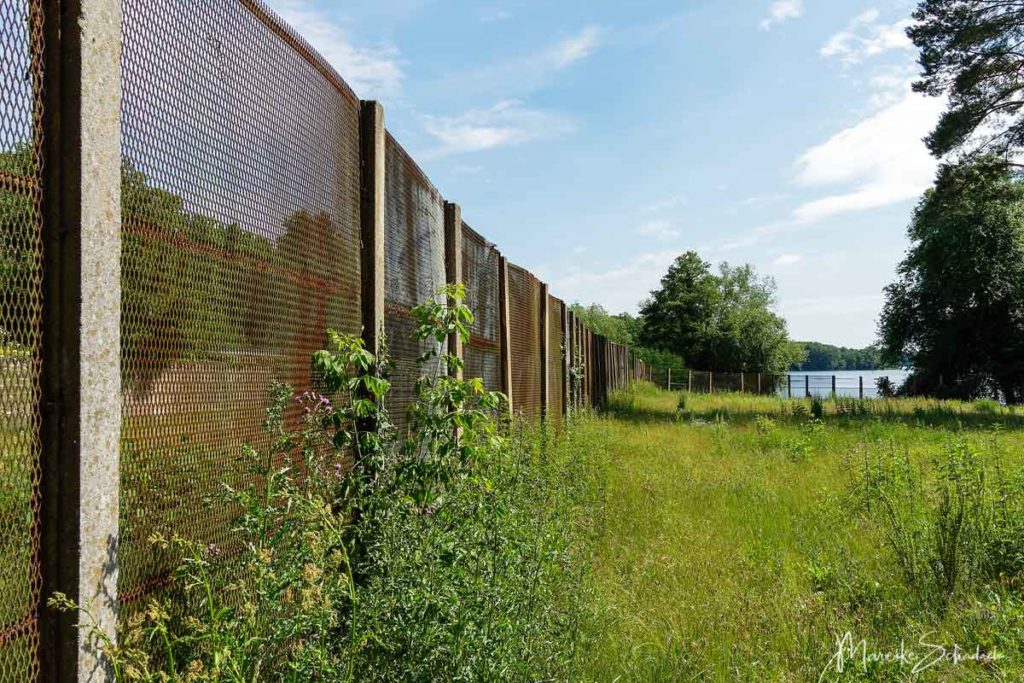

#10 Command Post Nieder Neuendorf with Border Museum
In the Hennigsdorf district of Nieder Neuendorf there is another border tower. Since 1987, it has served as a command post for 18 other border towers. Its structure is comparable to the command posts in Schlesischer Busch, Kieler Eck and Bergfelde. Since November 1999 the tower has been open to the public. Today it houses a multimedia exhibition on the division of Germany, the GDR border troops and the internal surveillance mechanisms. In addition, the museum documents the history of refugees, emigrants and opposition members from the region.
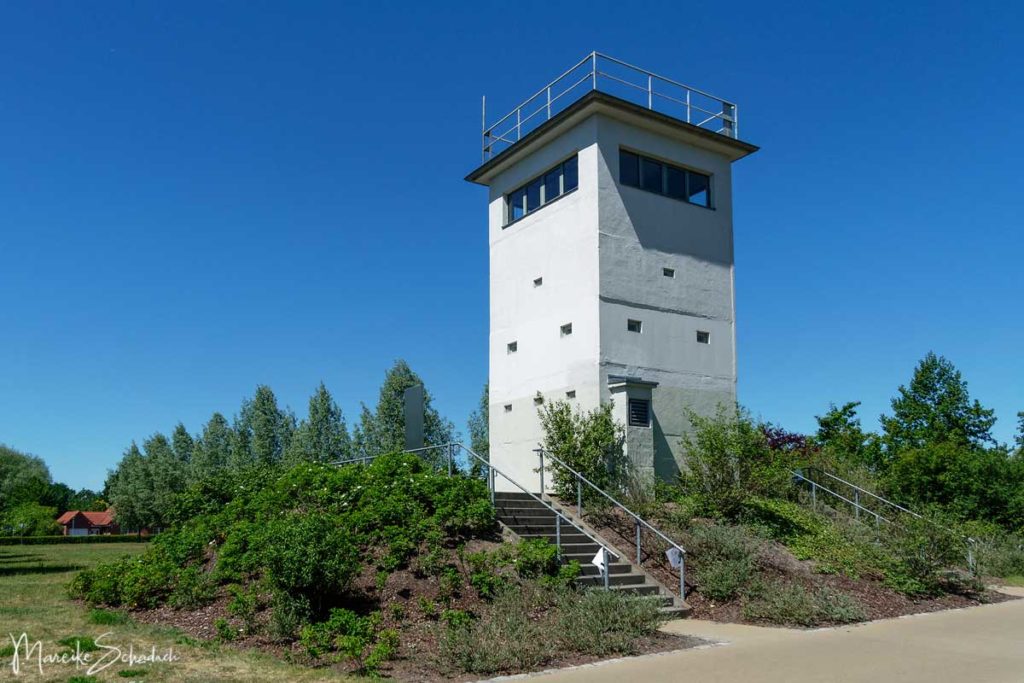
#11 Nature Conservation in the Bergfelde Command Post
After reunification, the former Bergfelde command post was transferred to the teacher Helga Garduhn for use for nature conservation purposes. The Bergfelde Border Tower has been used for nature conservation work since 1990 and enables nature conservation activities with schools, kindergartens, youth groups and adults. Today the tower is also known as the SDW nature conservation tower . The Schutzgemeinschaft Deutscher Wald (SDW) has been committed to the protection and preservation of our forests since 1947.
Information boards around the tower provide details about border installations in general and about the tower here in Bergfelde in particular. You can also see other elements of the border installations such as a section of metal fence, a piece of "Stalin lawn" and a vehicle barrier.


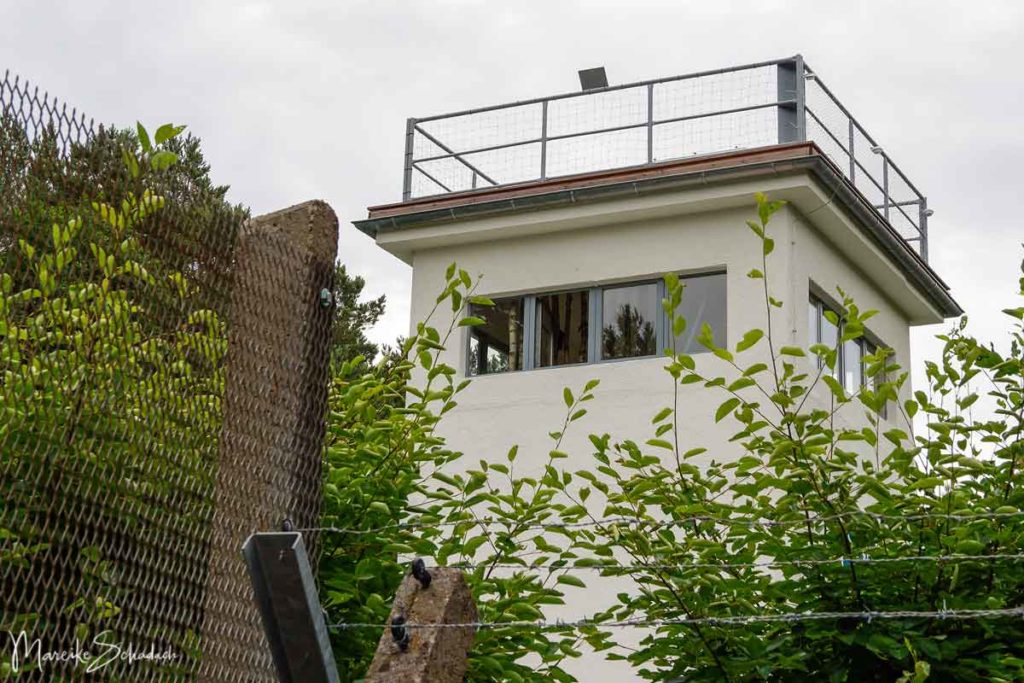
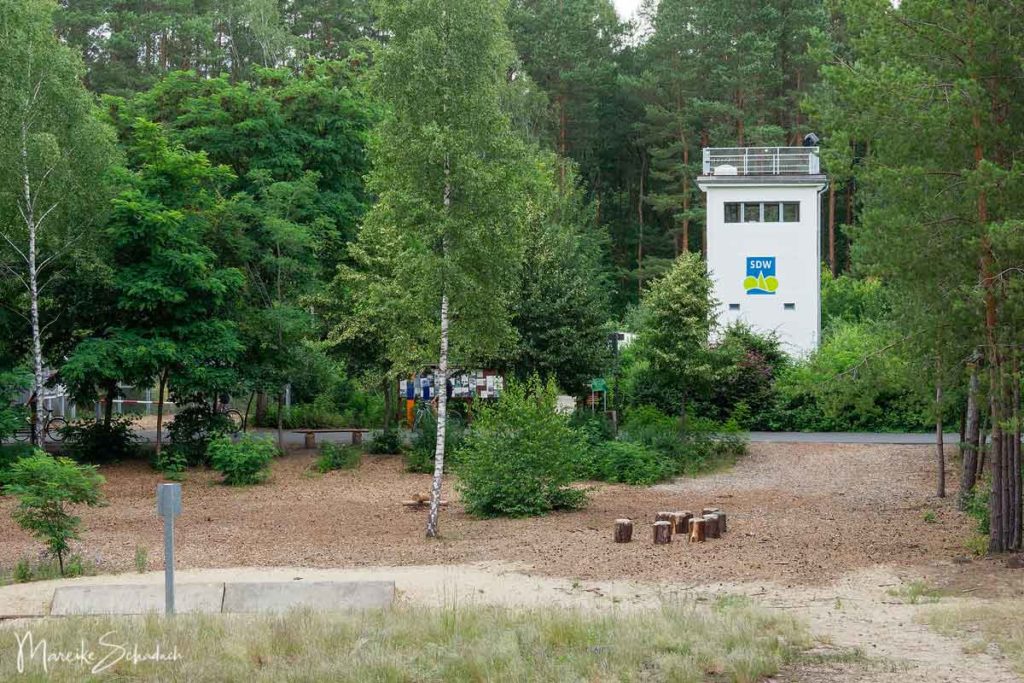
#12 "Stalin Lawn" in the Eichwerder Moor Meadows
The Stalin lawn - also called asparagus bed - was a thorny mat with thorns 10 to 14 centimetres long on both sides. They were intended to deter people from trying to escape or to break the feet of those fleeing. Anyone who tried to walk over it would inevitably fall and be impaled. The Stalin lawn not only lay flat on the border strip. It was also hidden vertically in ditches and installed horizontally on embankments and moors, for example in the Eichwerder Moor meadows. There were also thousands of these thorn plates in the river Havel. Human rights activists criticised this cruel way of stopping escape attempts. As a result, these mats were only used secretly in areas that were difficult to see.

To conclude the article
It was hard for me to let the article end with something as cruel as the Stalin lawn. I'd rather give you two final tips for further discoveries.
The Berliner Unterwelten e.V. offers a guided tour to tunnel escapes under the Berlin Wall . In total, there were more than 70 attempts that had been started to get to West Berlin through self-dug escape tunnels. However, only 19 attempts were successful. But at least 300 GDR citizens were able to flee. Most of the tunnels you see are replicas. But since November 2019 you can also visit an original tunnel from 1970/71.
The guided tour to the tunnel escapes takes place in Bernauer Straße. Not far away is the worthwhile Berlin Wall Documentation and Visitor Center.
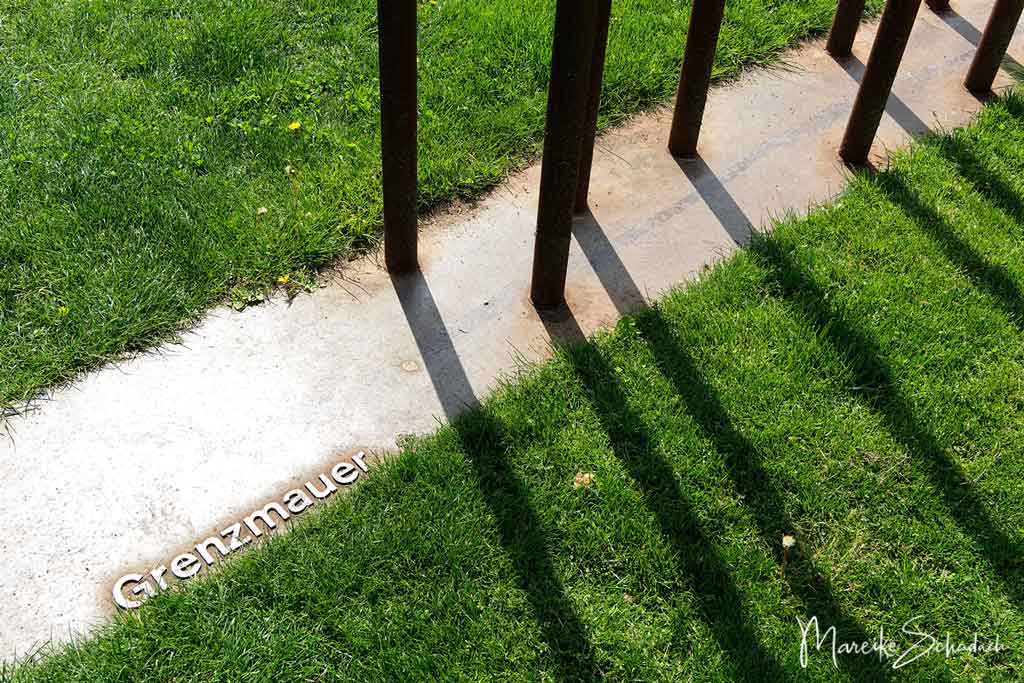
Book Recommendations and Guided Tours for Berlin Explorers
If you want to go deeper and learn more about the Berlin Wall, I can recommend the following books. Click on the picture to get to Amazon, where you can order the books. If you buy something through one of these affiliate links, I get a small commission and you help me to keep filling Fernweh-Motive with interesting articles. The product will not be more expensive for you.
You want to explore the former border on a guided tour? Then I can recommend the Insider Tour Cold War* (english + german) and a guided Bike Tour along the Wall in a small group* (german).
Did you like my article about the watchtowers and remains of the Berlin Wall? Then follow me Facebook, Pinterest or Instagram. I would also be very happy if you share my article with your friends. Do you have any questions or suggestions? If so, please write me a comment!
More Berlin articles to read on
You want to discover more of Berlin? How about Berlin's Lost Places or a walk to the Graffiti Skyscrapers in Art Park Tegel?
